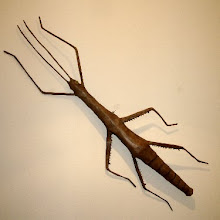1. Type of dye
2. Temperature of the dye (hot or cold)
3. Whether the egg was raw or had been boiled
Dyes to test are food coloring, commercial Easter egg dye, Ukrainian Easter egg (pysanky) dye, RIT and Tintex clothing dyes. I started with the first three.
I wanted to test raw as well as boiled eggs because I assumed boiling would have an effect on at least the cuticle covering the shell. In the spirit of the proceedings, I used the instructions provided on the PAAS website for hard cooking eggs:
How to prepare the perfect hard-cooked eggThey turned out very nice, so I prepared a delicious egg salad.
• Cover. Quickly bring just to boiling. Turn off heat.
• If necessary, remove pan from burner to prevent further boiling. Let eggs stand, covered, in the hot water for 15 minutes for large eggs (12 minutes for medium eggs, 18 for extra large eggs).
• Immediately run cold water over eggs or place them in ice water until completely cooled.
Tips for preparing hard-cooked eggs:
• Only cook one layer of eggs at a time. Rapidly boiling water causes the eggs to bump against one another, which is more likely to cause cracking.
• To avoid cracking as well as the harmless, greenish ring around hard-cooked yolks, avoid over-cooking. Also, cool the eggs quickly after cooking by running cold water over them or placing them in ice water until completely cooled.
• Once eggs have cooled, refrigerate them in their shells until use.
• Hard-cooked eggs in the shell can be refrigerated up to one week. Hard-cooked eggs out of the shell should be used immediately.
Food coloring
First up was food coloring. I used McCormick, mainly because it’s the easiest to find, but also because I like the little bottles. And there are instructions for dyeing eggs right on the box!
Mix ½ cup boiling water, 1 tsp. vinegar and 10 to 20 drops Food Color in a cup to achieve desired color or use the chart above. Repeat for each color. Dip hard-cooked eggs into dye 5 minutes or longer.
Red 20
Yellow 20
Green 20
Blue 20
Pretty Purple 5 Red + 15 Blue
Orange Sunset 17 Yellow + 3 Red
Teal 5 Blue + 15 Green
Mint Green 14 Green + 6 YellowDusty Rose 14 Red + 6 Blue
Pretty much the same results with blue – not much difference among the samples. The boiled shell in cold water was not quite as deep. Over all the food dye did a good job – a nice range of tones and colors, keeping the texture of the eggshell. Because of the transparency of the dyes, different shell colors will produce different results – brown eggs with red or yellow dyes can result in a nice range of brown tones.
Easter egg dye
Pysanky dye
In the pictures below, from left to right: food dye, Pass, and pysanky. The pysanky dye is definitely deeper, and will get a little deeper with additional soaking (additional time isn’t as effective with the other dyes). Also black pysanky dye is available - not so with the other dyes – they just aren’t rich enough to produce a deep black.
I originally intended to find out which of these dyes work better, but, looking at these samples, the variety of color and tones is much more interesting to me. I’ll probably end up using a little of each.
Still to test – RIT and Tintex dyes, and a simple fading test.




ABSOLUTELY AWESOME! OVERWHELMING PATIENCE,SKILL AND CREATIVITY. BREATHTAKING!.
ReplyDelete